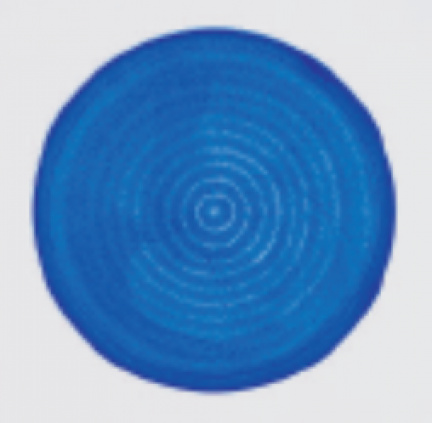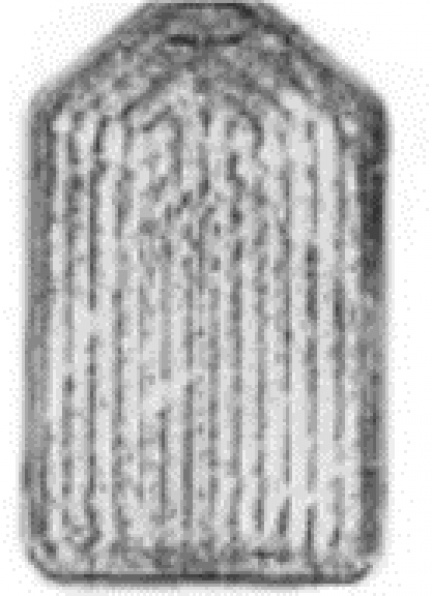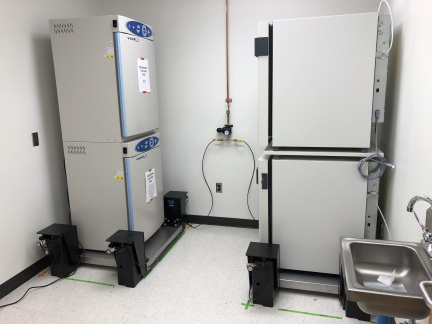Cell culturing is a commonly used method for the growth of specific cell types. The first step of the process is the actual preparation of the cell cultures, which usually takes place in a sterile laminar box using instruments that have been carefully disinfected beforehand. The cell cultures are then carefully transferred into incubators that provide a sterile and controlled environment for optimal cell growth. For example, mammalian cells are typically cultured in CO2 incubators at 37°C with very high humidity and CO2 concentrations ranging from 5-7%. These conditions mimic the internal environment of a living organism. However, this is not all that needs to be considered when cultivating cell cultures.
New findings from studies point to possible negative effects of vibration on cell cultivation. There may be several sources of vibration, including the incubator itself. In this case, vibration is caused by the temperature control of the incubator by means of a built-in fan or, in the case of water cooling, by the circulation of water. Most of the time, however, the vibration comes from the surrounding environment.
An example of this phenomenon can be seen in the figure below. The figure shows stained chicken embryo fibroblasts in a 100 mm container. Due to vibrations, they have subsequently grouped together in a concentric circular pattern.
The issue of unwanted mechanical vibrations has been a much discussed topic in industries such as the semiconductor industry, photonics and microscopy for more than 50 years. It is therefore a matter of course for technology manufacturers to adapt their products to the vibration specifications of individual industrial and scientific devices. But the same cannot be said for incubators, which often go unnoticed in this respect, as if unwanted vibrations were no problem at all.
Fortunately, some manufacturers are starting to take notice and point to specific examples of the impact of vibration on the culture process:"Incubator vibration is responsible for some of the most bizarre growth patterns seen in culture dishes. The effects of vibration are primarily felt on the cells as they attempt to initially attach to the surface of the culture vessel. The vibrations push the cells to the edge or centre of the vessel, and in some cases may even cause the cells to cluster in concentric rings." [1] Figure 1 shows the described phenomenon in a culture of chick embryo fibroblasts.
In Figure 2 we can observe another of the possible effects of vibration. This is a typical example of standing waves in cell culture. In this case, the waves have formed across the culture bottle.
So how to effectively prevent unwanted vibrations?
"In most cell culture laboratories, there are typically several sources of vibration. In addition to the aforementioned ventilation, the centrifuge next to the incubator, the movement of the operator or even the laboratory's air conditioning system can be a source. In some incubators, however, vibration damping may not be possible at all due to the design or location of the fan. However, if this is not the case with your incubator, you can try to reduce vibration by placing a heavy object in a corner of the incubator to adjust the frequency. However, you must be aware of the risk associated with contamination of incubators." [2]
There is, however, a more effective way to dampen vibrations - placing the incubator on an anti-vibration surface such as the MaxDamp® from TMC.
The third picture above shows two incubators placed on top of each other, standing on MaxDamp isolation platforms. MaxDamp is a pneumatic isolation system that significantly reduces the transmission of vibrations from the floor to the incubator. Thanks to the anti-vibration platforms, the incubators are much more resistant to all possible sources of mechanical vibration in the environment, be it centrifuges, vibrations caused by operator movement, HVAC systems, air conditioning units, etc.
Selected solutions from TMC can be found in the anti-vibration optical tables product section of our website. For a specific application, please contact us and we will be happy to advise you on the selection.
The original application report can be found on the TMC Vibration Control manufacturer's website HERE.
Resources:
- Ryan, John A. "A Guide for Identifying and Correcting Common Cell Growth Problems with Adherent Cells." We Get You, www.corning.com/worldwide/en/products/life-sciences/resources/webforms/we-get-you-a-guide-for-identifying-and-correcting-common-cell-growth-problems-with-adherent-cells.html.
- Vibration Patterns in Cell Culture Vessels, 2018, assets.thermofisher.com/TFS-Assets/BID/Technical-Notes/vibration-patterns-cell-culture-vessels-technical-note.pdf. (Own translation)


